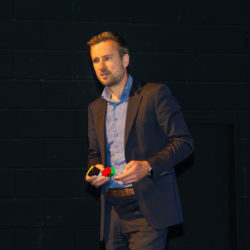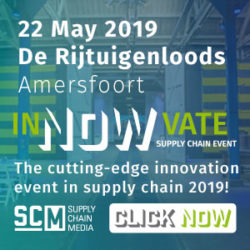Diversity drives innovation

Few companies nowadays would deny that innovation is crucial to their long-term survival, but innovation doesn’t just happen by itself – as Lego knows from its own bitter experience. Fons Trompenaars, keynote speaker at inNOWvate: “Innovation is nothing more than finding solutions to difficult problems, but in reality it seems as if we do all the things that stand in the way of innovation.”
Trompenaars is an influential business thinker and author of various popular management books. One of his key messages is the importance of diversity within companies – because it creates different perspectives, and different perspectives result in a broader view of the problem at hand. “Thankfully we have plenty of diversity nowadays. 58 percent of people living in Amsterdam don’t have Dutch parents, for example, and Spanish is the number 1 language in a state like Florida. In business life, although we’re seeing ever-more top-level roles being fulfilled by women and young people – groups that have previously been ignored on a large scale – white males are still dominant.”
Diversity alone is not enough; a company also needs a culture that embraces diversity, and that in turn requires leadership. “Think carefully about building a balanced team, for instance. A team needs people in several different roles: not only people who are inventive, but also people who aren’t afraid of challenging ideas and people who can put ideas into practice.”
Innovation at Lego
 Danish toy manufacturer Lego is one of the companies that has gone through a cultural transition. The company was hit by crisis in early 2000. Sales fell due to the rise of game computers for families, and the patent on the unique building bricks expired at the same time. “Lego’s response was to innovate. The number of products tripled very quickly, and new factories had to be built to manufacture them. However, this had little – if any – positive effect on the turnover, whereas the costs had risen dramatically. In the space of just a couple of years, Lego went from making a 15% profit to a loss,” says Jeroen van Weesep, Vice-President Innovation in Operations at Lego.
Danish toy manufacturer Lego is one of the companies that has gone through a cultural transition. The company was hit by crisis in early 2000. Sales fell due to the rise of game computers for families, and the patent on the unique building bricks expired at the same time. “Lego’s response was to innovate. The number of products tripled very quickly, and new factories had to be built to manufacture them. However, this had little – if any – positive effect on the turnover, whereas the costs had risen dramatically. In the space of just a couple of years, Lego went from making a 15% profit to a loss,” says Jeroen van Weesep, Vice-President Innovation in Operations at Lego.
The solution was to go back to basics: the bricks that had made Lego great in the first place. After all, the bricks are what capture a child’s imagination and inspire them to become a builder of the future. “We set about modularizing everything – not just the products, but our operation too. We change 70 percent of the product portfolio every year. Each product is made up of a fixed number of standard elements that we can hold in stock. That reduces the risks,” explains Van Weesep.
“We don’t innovate ‘in the box’ or ‘outside the box’, but ‘around the box’. And it has been successful: Lego achieved double-digit growth for a ten year period, during which the profit margin rose back up from 0 to 30 percent. That lasted until 2017, when there was another downturn in sales. We told each other so often that we shouldn’t allow ourselves to be blinded by success, but perhaps it happened after all. Innovation is most definitely back on the agenda, including in the supply chain. We don’t need to completely redesign it, but we do need to innovate in order to create better alignment between Supply Chain and Product Development.”
Aftermovie inNOWvate Supply Chain Event 2018
SAVE THE DATE for the next edition: inNOWvate Supply Chain Event 2019 on May 22 at Rijtuigenloods, the Netherlands.










